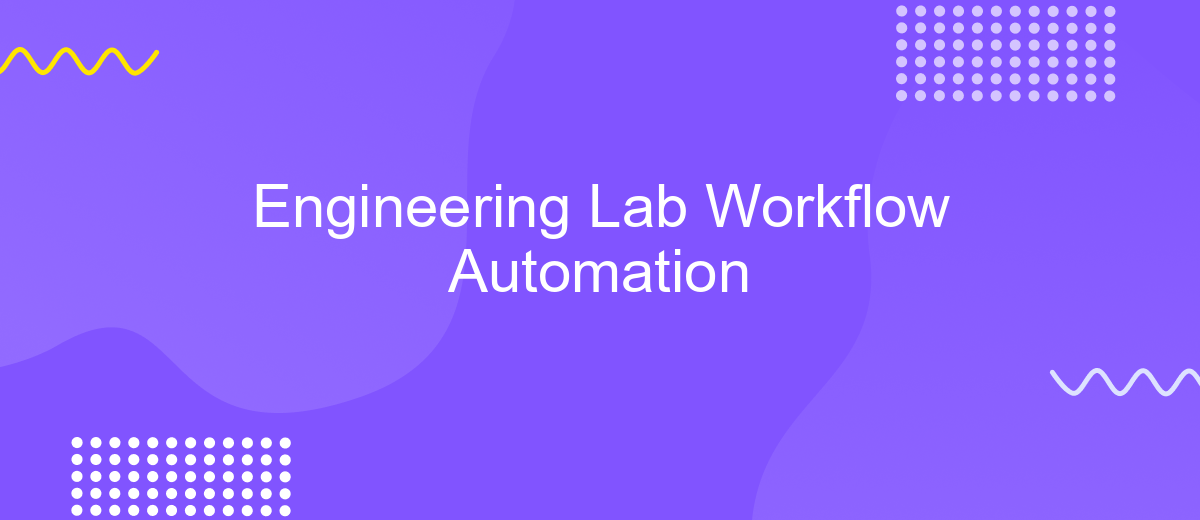Engineering Lab Workflow Automation
In the rapidly evolving field of engineering, efficient lab workflows are crucial for innovation and productivity. This article explores the benefits and methodologies of automating engineering lab processes. By integrating advanced technologies, labs can streamline operations, enhance accuracy, and significantly reduce manual labor, ultimately accelerating research and development timelines. Discover how workflow automation is transforming the engineering landscape.
Introduction
Engineering Lab Workflow Automation is revolutionizing the way laboratories operate, enhancing efficiency and accuracy. By automating repetitive tasks, labs can focus more on critical analysis and innovation. This transformation is driven by advanced technologies and integrated systems that streamline processes and reduce human error.
- Increased productivity through task automation
- Enhanced data accuracy and consistency
- Reduced operational costs and time
- Improved compliance with industry standards
One of the key components in achieving seamless integration and automation is the use of platforms like ApiX-Drive. This service enables labs to easily connect various tools and systems, ensuring smooth data flow and interoperability. By leveraging such solutions, laboratories can significantly improve their workflow, making them more agile and responsive to changing demands.
Benefits of Lab Workflow Automation

Lab workflow automation significantly enhances efficiency by reducing manual tasks and minimizing human errors. Automated systems streamline processes, allowing researchers to focus on high-value activities rather than repetitive tasks. This leads to faster project completion times and increased productivity, ultimately accelerating scientific discoveries and innovations.
Moreover, integrating various lab instruments and software through automation platforms such as ApiX-Drive ensures seamless data transfer and synchronization. This not only improves data accuracy and consistency but also facilitates real-time monitoring and analysis. By leveraging such integrations, labs can optimize their workflows, reduce operational costs, and enhance overall performance, driving more reliable and reproducible results.
Key Components of an Automated Lab Workflow

Automating lab workflows involves several critical components that streamline processes, enhance accuracy, and improve efficiency. By integrating these components, labs can achieve a seamless and effective workflow.
- Data Acquisition Systems: Automated systems to collect and record data from various instruments and experiments.
- Laboratory Information Management Systems (LIMS): Software solutions that manage samples, associated data, and lab workflows.
- Robotic Process Automation (RPA): Robots and automated systems that handle repetitive tasks such as pipetting, mixing, and sample preparation.
- Integration Services: Tools like ApiX-Drive facilitate seamless integration between different software and hardware systems, ensuring data flows smoothly across platforms.
- Quality Control Systems: Automated systems that monitor and ensure the accuracy and reliability of lab results.
By implementing these key components, labs can significantly reduce manual errors, save time, and increase productivity. Integration services like ApiX-Drive play a crucial role in connecting disparate systems, enabling a cohesive and automated lab environment. This comprehensive approach ensures that all aspects of lab operations are optimized for maximum efficiency.
Implementation and Considerations

Implementing workflow automation in an engineering lab requires careful planning and consideration of various factors. The first step is to identify repetitive tasks that can be automated, such as data collection, report generation, and equipment calibration. This identification process helps in prioritizing tasks that offer the most significant efficiency gains.
Once tasks are identified, the next step is to select appropriate tools and software for automation. One such tool is ApiX-Drive, which facilitates seamless integration between various software applications, making it easier to automate workflows without extensive coding. ApiX-Drive supports a wide range of applications, ensuring that all necessary tools within the lab environment can communicate effectively.
- Identify repetitive and time-consuming tasks
- Select suitable automation tools and software
- Integrate applications using services like ApiX-Drive
- Test and validate the automated workflows
Finally, it's crucial to monitor and review the automated processes regularly to ensure they are functioning as expected. Continuous improvement and adjustments may be necessary to adapt to changing lab requirements and to leverage new technological advancements. Proper documentation and training for lab personnel are also essential to maximize the benefits of automation.


Conclusion
In conclusion, the automation of engineering lab workflows significantly enhances efficiency, accuracy, and productivity. By leveraging advanced tools and technologies, laboratories can streamline their processes, reduce manual errors, and focus on more critical tasks. This transformation not only optimizes resource utilization but also accelerates the pace of innovation and development within the engineering field.
Moreover, integrating various systems and applications through platforms like ApiX-Drive further simplifies the automation process. ApiX-Drive enables seamless connectivity between different software solutions, ensuring smooth data flow and synchronization. This integration capability is crucial for maintaining a cohesive and efficient workflow, ultimately leading to better outcomes and a more agile engineering environment. Embracing these automation strategies is essential for any lab aiming to stay competitive and achieve excellence in their operations.
FAQ
What is Engineering Lab Workflow Automation?
Why is workflow automation important in engineering labs?
How can I start automating workflows in my engineering lab?
What types of tasks can be automated in an engineering lab?
How do I ensure the accuracy and reliability of automated workflows?
Apix-Drive is a simple and efficient system connector that will help you automate routine tasks and optimize business processes. You can save time and money, direct these resources to more important purposes. Test ApiX-Drive and make sure that this tool will relieve your employees and after 5 minutes of settings your business will start working faster.

